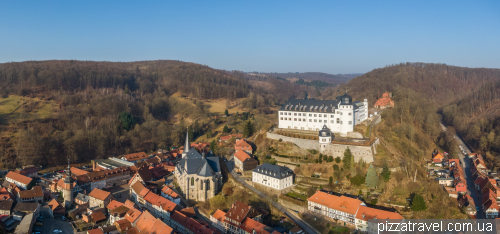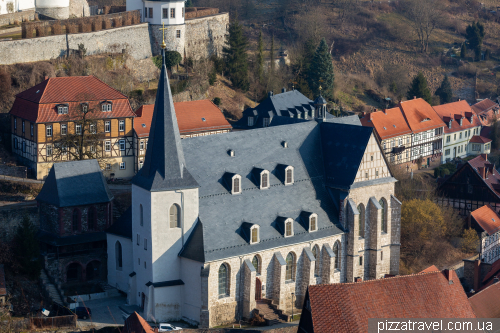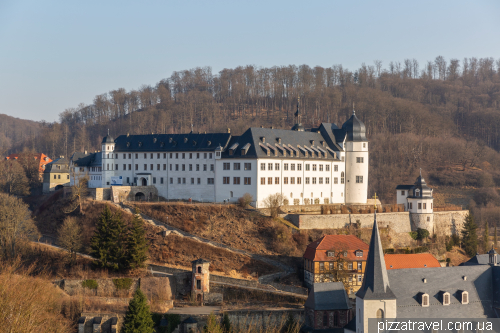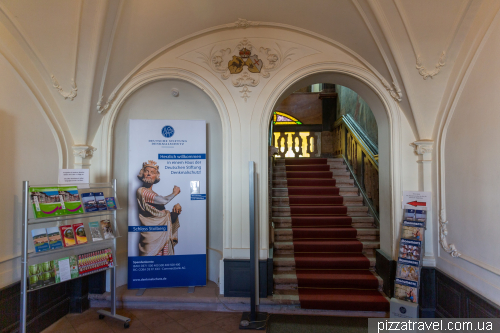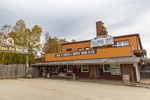For us, Stolberg was particularly interesting because of the opportunity to climb the surrounding mountains and see the town from different points.
51.572250, 10.955167 - start of trail #1
Climb all the way up to the forest, the views get better and better.
51.574167, 10.957000 - start of trail #2
Climb a bit, up to a fork, then turn left and walk along the mountainside.
In the center of the old town, the Town Hall from 1454 stands out. Its distinctive feature is the absence of internal staircases; access to all three floors is exclusively via a wide external staircase behind the building.
In front of the Town Hall is a statue of Thomas Müntzer, the city's most famous native. He was a famous German radical reformer, preacher, theologian and revolutionary of the Reformation. He advocated a complete transformation not only of the church, but also of the social order - in favor of the poor and oppressed. Considered the forerunner of Christian socialism and even communism (according to Marx and Engels). To Martin Luther and other reformers he was a dangerous fanatic, but to the poor he was a prophet of justice.
For his participation in the peasant uprising of 1524-1525 he was captured, tortured and executed - beheaded by order of the Duke of Saxony.
Near the Town Hall stands another symbol of the city, the historic Seigerturm tower, built before 1282. It was part of the inner city gate complex that protected the market square. The lower part of the tower, made of rubble stone, is original and has been preserved since its construction. In 1832, the upper part of the tower was rebuilt in brick and topped with a characteristic dome with a double lantern, giving the tower its present appearance.
St. Martin's Church is the main church of the city. It was built in the Gothic style at the end of the 15th century, and the future reformer Thomas Müntzer was probably baptized here.
More than 350 half-timbered houses have been preserved in the town and give Stolberg its fairytale atmosphere. The town has remained almost unchanged since the 16th century, for which reason it is often called “the pearl of half-timbering in the Harz”.
After the walk, we went up to Stolberg Castle (Schloss Stolberg), founded in the XIII century and later rebuilt in Renaissance style. It was the residence of the Counts von Stolberg, one of the oldest noble dynasties in Germany. In 2025, the castle is still undergoing extensive reconstruction, but as you can see from the photos, it is hardly noticeable from the outside. During the reconstruction, the castle is free to enter and you can visit a few historic rooms.
Getting there: paid parking in the very center 51.573250, 10.955639. Public transportation is not so easy to get to, use bahn.de.
